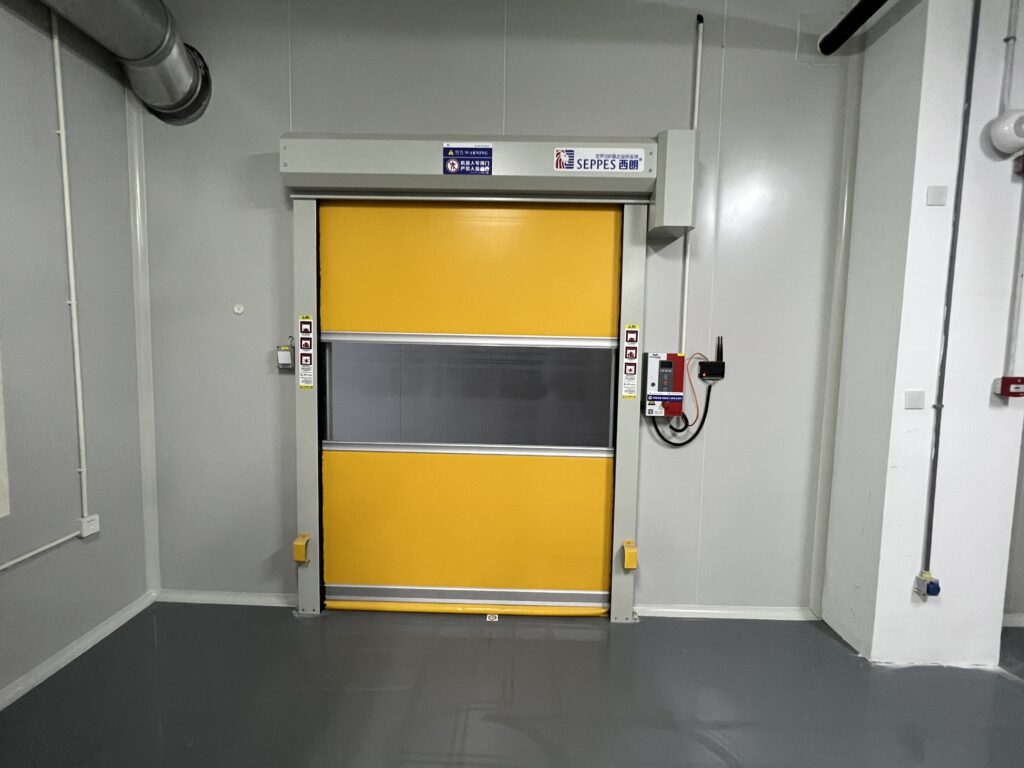In modern industrial and commercial settings, high-speed roll-up doors are widely used in logistics warehouses, food processing facilities, electronics manufacturing plants, and pharmaceutical cleanrooms due to their efficient opening and closing mechanisms, excellent sealing properties, and energy-saving characteristics. However, with the wide variety of high-speed doors available on the market, differing in structure, configuration, and functionality, many procurement managers often face the challenge of determining which type is most suitable for their specific needs.
This article will systematically analyze the selection logic for the right high-speed roll-up doors, guiding you in choosing the most suitable product by focusing on three core dimensions: application scenarios, control systems, and door curtain materials.
Select based on the usage environment — Rapid roll-up doors have diverse application scenarios

Different usage scenarios have different functional requirements for rapid doors. For example:
Food factories or pharmaceutical workshops: It is recommended to choose PVC rapid roll-up doors with high sealing performance, easy cleaning, and insect and dust prevention;
Logistics warehouses or factory workshops: These require handling high-frequency opening and closing as well as wind pressure impacts, so consider high-strength tracks combined with wind-resistant structural design;
Cleanrooms or electronics factories: It is recommended to use high-seal rapid doors with a zipper structure to effectively block the flow of micro-dust;
Low-temperature cold storage or temperature-controlled areas: Insulated rapid doors with good thermal insulation performance should be selected to prevent heat loss and save energy.
Accurately determining the application scenario is a prerequisite for the long-term stable operation of rapid doors.
Consider door control methods—smart rapid door systems offer more responsive performance
The way a door opens directly impacts its operational efficiency and user experience. The primary control methods for rapid roll-up doors currently include:
Radar sensing: Suitable for areas with frequent pedestrian and forklift traffic, offering fast response times and contactless operation;
Ground magnetic sensing: commonly used for fixed routes where forklifts enter and exit, reducing false openings;
Remote control or button control: suitable for ordinary factory or workshop passages;
Pedestrian and vehicle separation configuration: achieves pedestrian and vehicle separation through a dual-sensing system, effectively enhancing safety and efficiency.
It is recommended to select a control method that suits the factory area’s requirements to ensure both efficiency and safety.
Focus on curtain material and structure—choosing the right material ensures durability

The material of the curtain directly affects the wind resistance, wear resistance, and service life of a high-speed rolling door. Common materials include:
High-density PVC material: Suitable for most factory environments, with good elasticity and waterproof properties;
Polyurethane foam insulated curtain: Suitable for cold chain logistics and temperature-controlled workshops;
Transparent window design: Enhances visibility during passage, suitable for workshops or retail storefronts;
Zipper-structured curtain fabric: Features self-repair functionality, automatically resetting after collisions.
Additionally, whether the track design includes dust-proof and wind-resistant structures is a key factor determining the door’s lifespan.
Summary: Three steps to selecting a right high-speed roll-up door
To ensure that the selected high-speed door truly meets the needs of your business, follow these three steps:
Identify the application scenario: cleanliness, dustproofing, heat insulation, high-frequency opening and closing requirements, etc.
Match the control method: personnel and vehicle traffic modes, whether automatic sensing is required, etc.
Select the door curtain material and structure: durability, sealing, self-repairing ability, etc.

